There are many varieties of cookware which you can choose from. Each type of cookware has its pros and cons that you may want to consider. Most people will ask if their preferred cookware is safe to use. Thus, randomly ask yourself questions like “Is aluminum pan safe?” Yes, it is! Keep on reading to learn more about it!
What is aluminum?
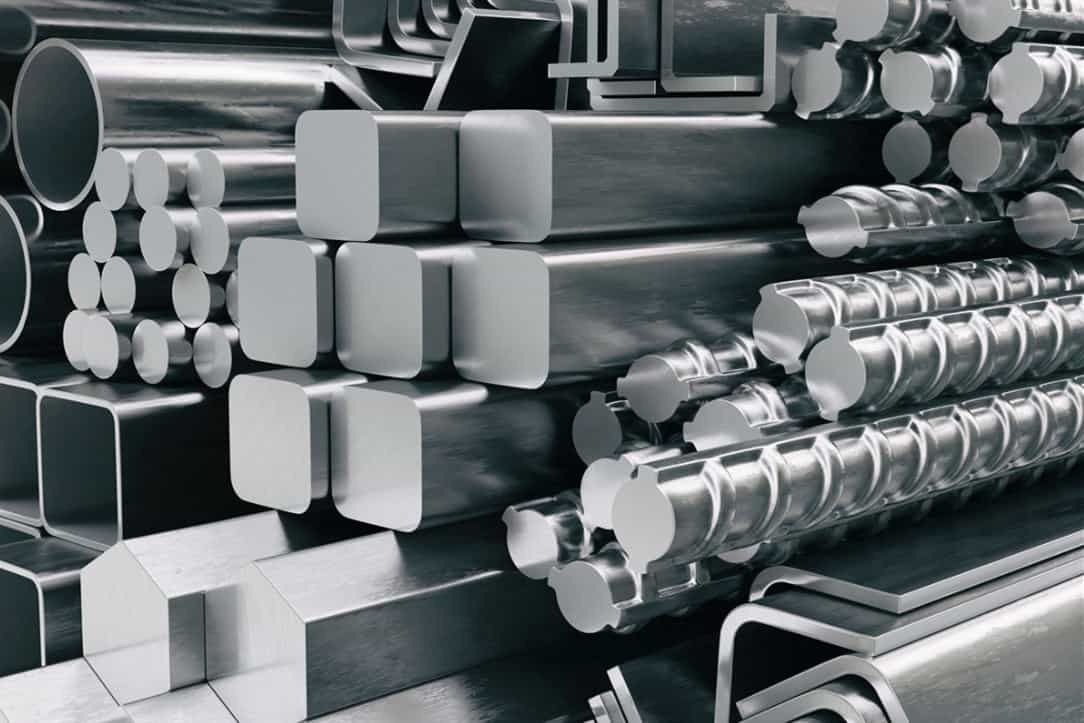
Aluminum is one of the well-known and familiar materials used mainly in engineering, which is often seen in automobiles, airplanes, computers, mobile phones, house appliances in making cookware and is in demand in most households. It is also even used as a material finish in most architecture and interior designs. Technically, it is part of our daily lives.
Aluminum is famous for being lightweight yet durable, functional, and a good heat conductor, so it is also a consumers’ choice material of cookware to use.
Take a quick look at the table below to learn about the pros and cons of the aluminum pan:
| PROS | CONS |
| Good heat conductor | Tendency to leach |
| Low-cost | Reactive |
| Lightweight | Sticky |
| Good heat retention | Soft metal |
| Durable | Prone to warping |
Note that the pros and cons mentioned above pertain to the standard aluminum pan without additional coatings that protect food from leaching.
Is it safe to use an aluminum pan?
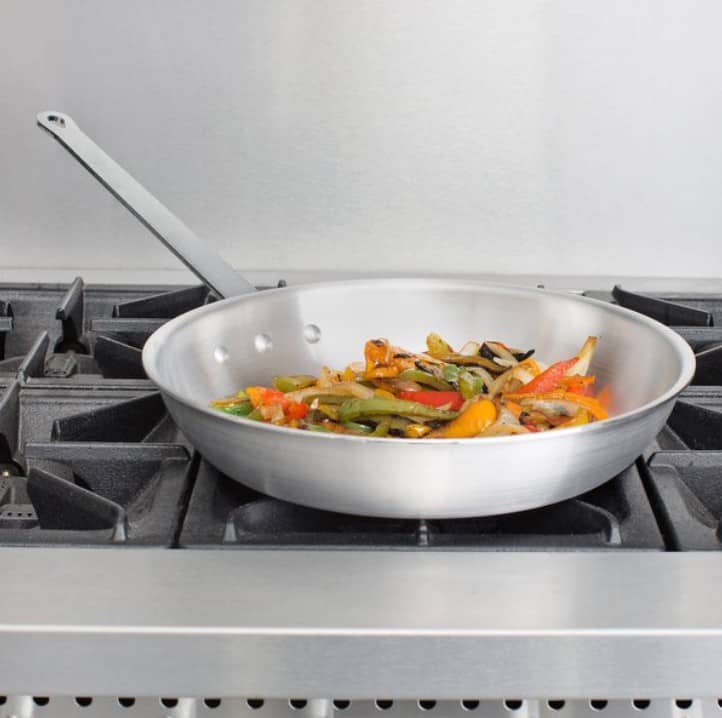
Though this may not be common knowledge to ordinary people, professional chefs and people who always cook are aware that specific types of cookware may be perfect for different cooking methods. However, certain types of cookware, if not used correctly, could compromise people’s health. The aluminum pan is one such example.
Yes, an aluminum pan is still safe for cooking, but only when you use pans that are anodized or have a ceramic coating. These coatings prevent the aluminum from coming into contact with food, especially acidic ones.
Though the effect on your health does not occur right away, continuous ingestion of aluminum can lead to respiratory damage, nervous system damage, or even get poisoned when ingested, inhaled, or absorbed in massive amounts.
You may wonder why manufacturers still produce this type of cookware, knowing that there are potential health risks at stake. These manufacturers still sell out cookware made out of purely aluminum simply because consumers still prefer this over any other type of cookware. It is an excellent material that provides almost all the good qualities most consumers look for.
Do not worry too much about the potential health risks because, according to studies, the average intake of aluminum is 1 to 10 milligram daily, which does not affect your health unless you have underlying conditions that the aluminum intake can trigger.
And according to the World Health Organization or WHO, adults can manage 50 up to 75 milligrams of aluminum on a daily basis without any health effects.
It is essential that you know how to properly care for your aluminum pan, use it accurately, and always be alert not to scratch and damage the coating as it also serves as your protection.
Steps on how to season your aluminum pan
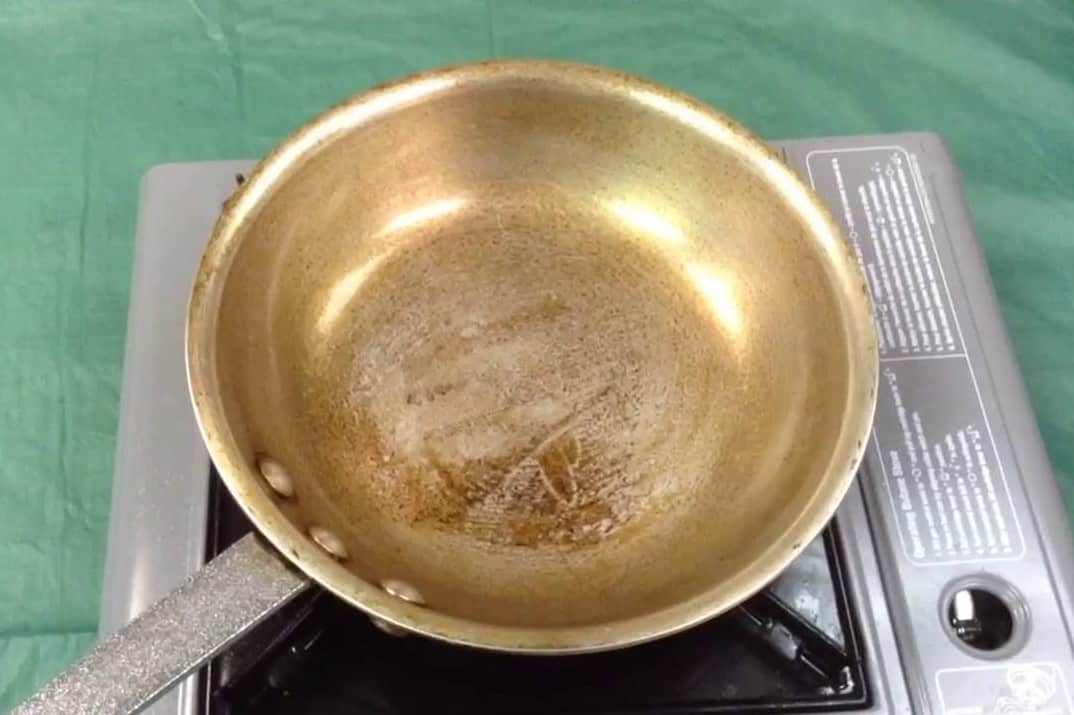
Like most cookware, you also need to season your aluminum pan periodically, mainly before and or after using the pan.
It is a necessary action to take to prevent any damage that may occur. The seasoning process helps in prolonging the life of your aluminum pan.
Do not worry because the steps are very easy to follow and will not take much of your time because it only has 6 steps:
- Take your dishwashing liquid and the sponge or any other soft-bristled brush and thoroughly clean your used aluminum pan.
- Rinse the aluminum pan with running water until no more soap residue is left.
- Make use of a clean towel or a dishcloth to dry the pan. Do not let it dry naturally to avoid rusting and corrosion.
- Any cooking oil will do, but flaxseed oil is preferred. You may use a cooking brush and apply the oil onto the surface until you notice that it has formed a thin layer coating.
- You may opt between oven or cooktop and let it heat up for at least 20 minutes with 450 degrees Fahrenheit temperature.
- To ensure that your aluminum pan is appropriately seasoned, repeat the steps at least twice after the pan has cooled down.
You may watch the video below to learn more about seasoning an aluminum pan:
3 Things to keep in mind when you use an aluminum pan
Though you may have decided not to use some cookware made out of aluminum in your entire life, that is not possible, especially when it belongs to the topmost preferred cookware by many.
Even though there are many things to remember when you cook with your aluminum pan, here are the 3 most important things to keep in mind:
Avoid cooking in high heat temperature
You also need to keep in mind to avoid cooking with your aluminum pan in high heat as it is reactive to most acidic foods, making them toxic.
Avoid cooking acidic food
An aluminum pan is reactive to acidic food. Hence, as much as possible, avoid cooking any acidic food using your aluminum pan that may cause the food to become toxic due to leaching. However, it is still possible to cook these kinds of food only if you are sure enough that the coating has not yet worn out.
Avoid using a dishwasher
Although dishwashers really make the task easier and effortless, it is not safe to use with your aluminum pan. Use soap and hot water to handwash the aluminum pan and rinse well with running water. The reason why handwashing with hot and soapy water is advised is that it helps prevent grease from building up.
3 Types of Aluminum Cookware
Aluminum cookware is one among the lists of widely known cookware materials and is often seen in most households a long time ago and even up to this day.
Most people still prefer to use this over other cookware even if researchers have said that this material can cause Alzheimer’s disease. However, this claim has not yet been proven due to a lack of evidence.
Nonetheless, it’s always wise to heed these warnings and minimize contact with, ingestion of, or inhalation of aluminum. Like what they usually say, it is better to be safe than to be sorry at all.
Despite the claims, people still prefer this cookware, and it has 3 types: anodized, cast, and pressed aluminum cookware, respectively.
Anodized Aluminum Cookware
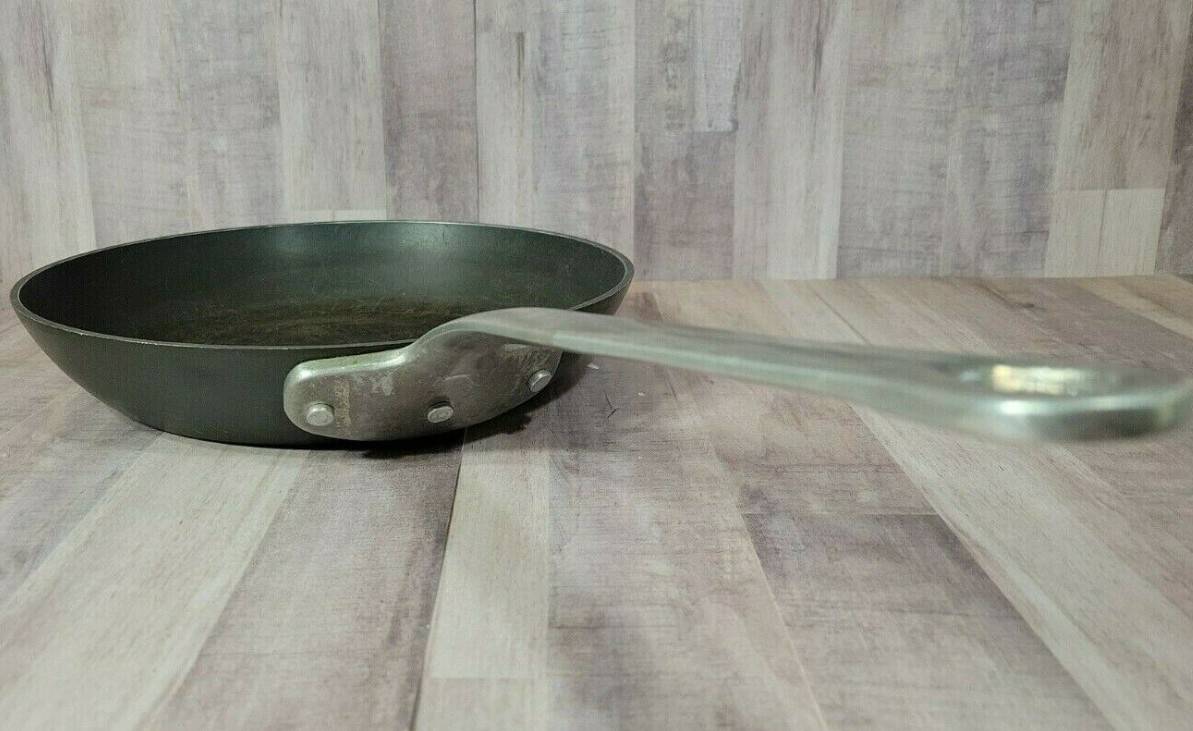
Among the three types of aluminum cookware, the anodized or the hard-anodized is the most notable and preferred type of aluminum cookware. The difference between the anodized and hard-anodized is that the latter offers at least five times the quality that the standard anodized version could offer.
The aluminum underwent the anodizing process where the natural oxide of the aluminum was enhanced, which creates a durable, non-reactive, non-stick, and scratch-resistant coating.
However, the better the quality, the more costly it will be. It is the price you pay, but it is an excellent addition to your cookware collection, and it is worth the investment.
Cast Aluminum Cookware
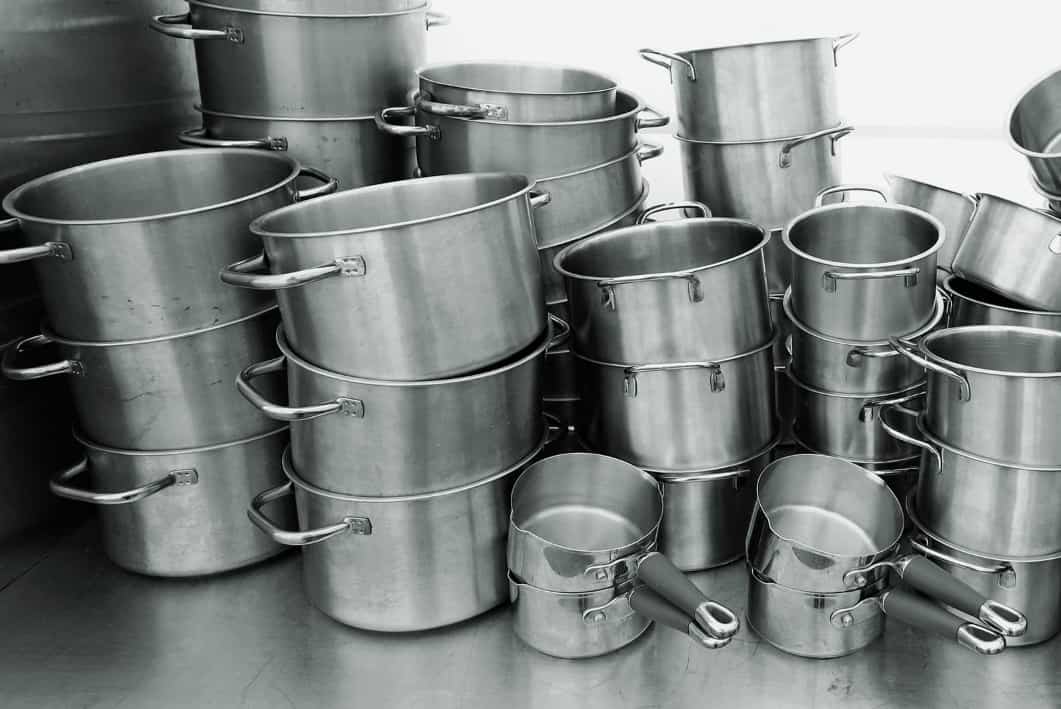
The second most popular type of aluminum cookware is cast aluminum. Its performance is reasonably competent enough, which is somehow worth every penny you have splurged on.
The manufacturing process is relatively slow compared to the other types of aluminum cookware. Hence, the extra cost of cookware production makes it worth the wait.
Since it underwent a long process, the cast aluminum cookware has a thicker surface and sidings making it great to use for cooking because it is best at heat retention. At the same time, the thickness makes it not susceptible to warping.
Pressed Aluminum Cookware
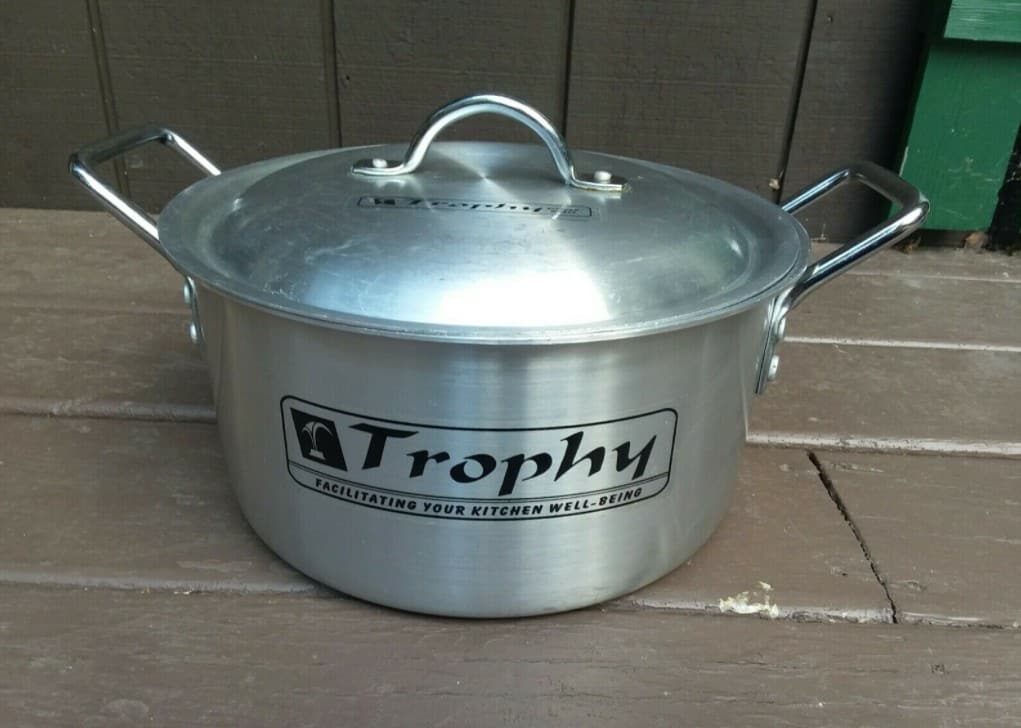
The Last but not least type of aluminum cookware is pressed aluminum cookware. Among the three, it has the lowest rate when it comes to cost, hence, preferred by people who want to get almost the same characteristics but do not want to spend much.
The pressed aluminum cookware is widely available and primarily seen in the local stores near you and the global online stores such as Amazon, eBay, and a lot more.
Since this type of aluminum cookware is the cheapest, you need to keep in mind that this is the least among the three for durability and lifespan. In no time, the screw-in handle may fall off, making it unable to use.
Sources of Aluminum
There are a lot of sources for aluminum, more than just your cookware. It is almost everywhere and used in our daily lives. And the chances are so high of being ingested or inhaled.
Most of the things we use daily contain some aluminum levels that mostly fall under the cosmetics and hygiene category, such as antiperspirants, toothpaste, dyes, make-up, and nasal spray.
Believe it or not, sometimes, the food we eat also contains small amounts of aluminum. You do not have to worry, though, because it does not take much effect on your body when ingested or inhaled in small quantities.
Summary
So, to answer your question, “Is an aluminum pan safe?” – yes, it is still safe to use for cooking, but there are some precautions that you need to take. It depends on how long you use it, how much you take care of it, how you cook using it, and lastly, what kind of aluminum you use.


Michael Johnson is the founder of Pan Mastery, Inspired by his blacksmith grandfather’s legacy has a deep appreciation for hand-crafted pots and pans, he provides invaluable guides, reviews, and recipes to enhance your culinary journey.
